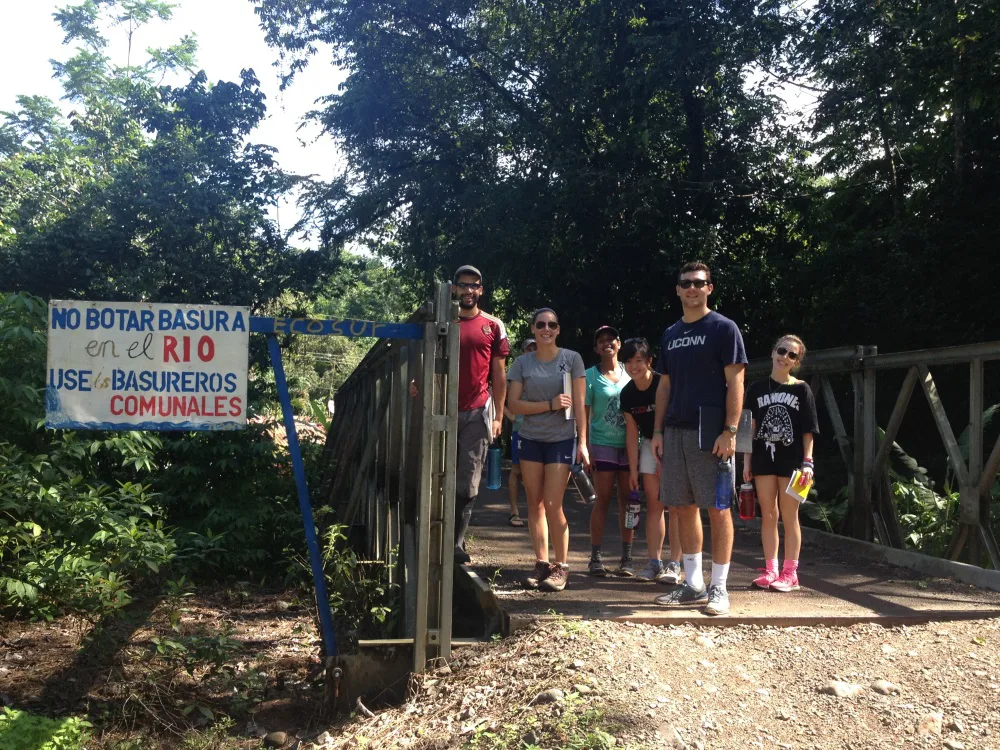
By: Matt Branch
Expanding Sustainable Tourism with National Park/Community Partnerships
During the summer of 2016, two groups of students conducted fieldwork concerning the potential for expending sustainable tourism prospects near Carara National Park (CNP). CNP is uniquely situated on the main highway between San Jose, where the majority of tourists arrive and depart, and Jacó Beach, a popular destination for nationals and visitors alike. CNP’s facilities are also unique in that they have a paved, universally accessible trial, among other more challenging trails. Working with the director of the park, we devised a survey method to determine the current touristic options in the region and the possibility for new options that would both generate revenue for the residents while protecting the local environment. The resulting recommendations examine possible collaboration to facilitate the Parks’ mission of assist local communities, particularly through sustainable tourism.
From June 21-26, CSDS students and the author gathered data in communities of El Sur, Bijigual and Las Delicias, which are located in the mountainous region south of the protected area and further from the Park entrance. A similar study was conducted from July 26-30 with another CSDS student group in the towns of Tarcoles and Cebrada Ganado which are to the north of the Park and located near the Bay of Nicoya. The tourism assessment process involved gathering information from members of the communities that are directly and indirectly involved in tourism to create a clearer understanding of communities’ tourism situation. A parallel assessment of the CNP visitors’ plans and tourism interests was conducted in order evaluate overlapping interests and suggest ways in which the Park can facilitate an increase in sustainable eco and rural tourism. This data provided the basis for the recommendations below.
The first research site included the small, mountainous towns by the southeastern corner of Carara National Park approximately 20 km from the main highway. All three communities view tourism expansion as primarily positive and their vision for tourism focuses on rural and nature tourism. Rural and agro-tourism initiatives already exist, including a hostile and tours of traditional food processing. This demonstrates that the local community possesses some of the skills and organization to expand tourism enterprises. Ideally these communities would like to develop the mountain biking tourism corridor from San Jose to Jacó Beach, passing through these towns. All communities agreed that improving the road to get to the area, increased English and marketing are most important to expanding ecotourism.
The other research site, Tarcoles, is a fishing community located on the Nicoya Peninsula, near the entrance of CNP. Some fishing cooperative members already combine their fishing profession with tourism by giving guided fishing tours. Many would like to expand this sustainable form of tourism to further increase tourism growth in the area in a manner that directly benefits the community. Again, although organized in a cooperative, they lack the English and marketing skills to increase and improve fishing tours. Tarcoles community members have discussed ways to attract more tourists such as a parking and picnic area near the bay and mangrove trails.
Seventy-eight percent of community members who participated in surveys have a positive view of the park, but of those 61% said that the park doesn’t benefit them and their community in any way. The park can build on existing social trust and work with communities to build a more mutually beneficial relationship. Both locals in El Sur and Tarcoles areas understand the benefits of environmentally conscious tourism. They are are actively pursuing agro-tourism in El Sur and looking to expand responsible fishing and mangrove trails in Tarcoles. Expanding such ecotourism benefits the park by attracting more environmentally responsible tourists to the area. It also provides alternative economic opportunities to potential local poachers or loggers and farmers who may invade forests expand agriculture. Some of the following park/community collaboration efforts could transform good park/community relations into tangible mutual benefits:
Support local community initiative to develop nature and rural tourism outside the park, to provide additional habitat protection, especially through support at the municipal planning level.
Find creative ways to inform Park visitors of the local, sustainable tourism option available.
Initiate a park wide initiative to permit local craft vendors who make goods from locally and sustainably sourced materials sell their goods at Parks.
Coordinate guide training at the park or nearby, so residents can learn to offer high-quality nature tours outside the park.
Add a link on the Carara National Park webpage to local activities and sustainable services.


Related Posts


Alumni Reflections: Stories of the Return to Kenya
